2.
GHANA
Minister calls for shared effort to protect forest resources
The Minister of Lands and Natural Resources of Ghana
has called for a concerted and shared effort from civil
society and the private sector to help protect the remaining
forest resources from further depletion.
The minister said the challenging state of the nation¡¯s
forest resources needed a more pragmatic solution to
address the situation, stressing that the timber industry¡¯s
raw material requirement was currently in excess of 2.7
million tonnes annually out of which there was a supply
gap of 430,000 tonnes from domestic sources.
See:
http://www.ghananewsagency.org/details/Social/Minister-calls-forcollective-
responsibility-to-protect-nation-s-forest/?ci=4&ai=31916
Measures taken to halt illegal teak billet processing
As part of efforts to put an end to the theft of teak logs
from forest reserves, the Forestry Commission (FC) has
introduced strict measures to ensure that only legally harvested and
processed teak billets are shipped out of the country.
The plantations department of the FC has intensified its
monitoring to clamp down on illegal teak harvesting and
processing and is confiscating suspect teak billets.
The Brong Ahafo Regional Manager, Mr. Joe Ackah,
disclosed that his unit conducted an investigation into
operations of some mobile sawmills in and around
Berekum and Japekrom where the theft of teak was
reported.
A member of the investigative team, Mr. Clement Brown,
also the head of the Plantation Department of FC, hinted
that the Commission, as part of its measures to ensure only
legally harvested teak is shipped, had put teams on the
roads to inspect containers carrying teak from inland areas.
Marginal decline in inflation
In financial news, inflation for the month of July 2011
recorded another marginal decline, dropping to 8.3 percent
down from the June figure of 8.59 percent. This is the
lowest inflation rate since June 1992.
The slight decline is said to be the result of a drop in the
price of food items.
African manufactured product exports double
African exports of manufactured goods have doubled over
the last ten years with the rise in demand for goods by
emerging trade partners, says a new report.
According to the African Economic Report the share of
trade conducted by the continent with emerging partners
has grown from approximately 23 per cent to 39 per cent
in the last decade.
The report shows that in 2009 China replaced the US as
the main Africa's trading partner. Africa's top five
emerging trade partners include China (38 per cent), India
(14 per cent), Korea (7.2 per cent), Brazil (7.1 per cent)
and Turkey (6.5 per cent).
However, the European Union and the US remain the most
important sources of Foreign Direct Investment for
African countries, says the report.
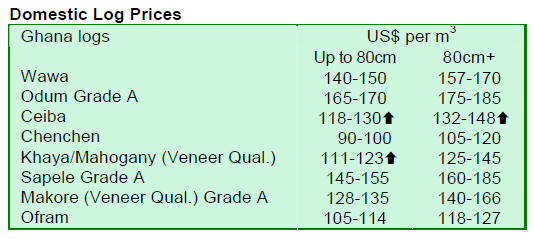
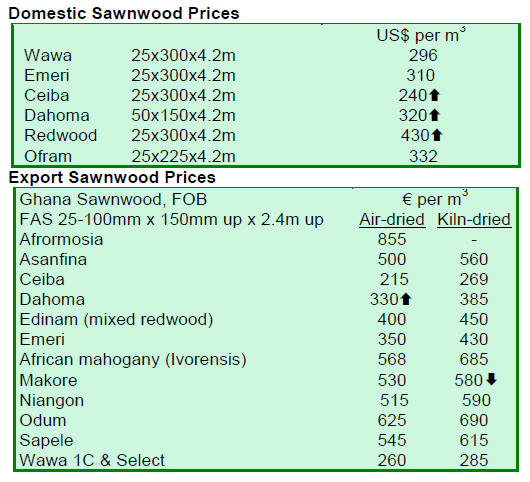
Ghana/Togo cross-border trade boosted by new
Border Information Centres
In a press release the ECOWAS and UEMOA
Commissions announced that, in collaboration with the
Governments of Ghana and Togo, the World Bank¡¯s
Abidjan-Lagos Corridor Organization (ALCO), the
USAID West Africa Trade Hub and private sector partners
a major step has been taken toward improving crossborder
transport and trade with the launch of two Border
Information Centres (BIC) on the Ghana-Togo border.
The BIC is an initiative of the USAID West Africa Trade
Hub to support effective implementation of the ECOWAS
Trade Liberalization Scheme (ETLS), a regional
mechanism for improving intra-Community trade in
locally produced goods towards boosting the regional
economy, stimulating employment and thereby
contributing to the overall development of the region.
Transport costs in West Africa are considered among the
highest in the world, constituting a serious constraint to
business across the region and a disincentive to local and
foreign investment.
The objective of the BIC is to reduce transport costs,
reduce, if not eliminate, delays in paperwork processing,
prevent duplicative processes/procedures, and improve
collaboration/coordination of enforcement agencies.
For more see:
http://news.ecowas.int/presseshow.php?nb=140&lang=en&annee
=2011
3.
MALAYSIA
China the largest importer of Malaysian furniture
China is fast becoming a leading importer of Malaysian
furniture with imports valued at RM50.2 million in 2010,
an increase of 23% compared to the RM41 million in
2009. China has already replaced the US as the largest
importer of Malaysian furniture.
Analysts expect China to import more furniture from
Malaysia in the years to come as its population grows and
as income levels rise. Estimates put income per household
rising to around US$9,000 over a decade.
Council of Asian Furniture Associations Furniture
plans promotion in China
The Council of Asian Furniture Associations (CAFA) is
working closely with associations in its member countries
including the China National Furniture Association, the
Chamber of Commerce of LeCong Furniture Cities as well
as the owners of the LeCong International Exhibition
Centre to organise trade and market promotion activities
for greater market penetration in China.
LeCong is reportedly offering showroom space on a
permanent basis to members of CAFA to promote and
market Asian furniture in China. Five CAFA member
countries and Malaysia are committed to participate in this
new venture. They are Indonesia, the Philippines,
Singapore, Thailand and Vietnam.
The LeCong IEC is located within an hour¡¯s drive of
Guangzhou International Airport. The LeCong Furniture
Cities occupy 3 million square metres of space and are
home to many modern furniture malls.
STIA calls on government to review Sabah log export policy
The Sabah Timber Industries Association (STIA) has
called on the State government to implement export
policies that will aid the timber industries in the state to
overcome the persistent shortage of raw materials.
The STIA is of the opinion that the volume of logs
exported from Sabah should be reduced and that log
imports should be facilitated.
STIA said that this policy review is necessary to
encourage the development of downstream processing in
the State.
Some RM4.8 billion in revenue and RM1.0 billion in
foreign investment by the local timber industry were
recorded in 2009.
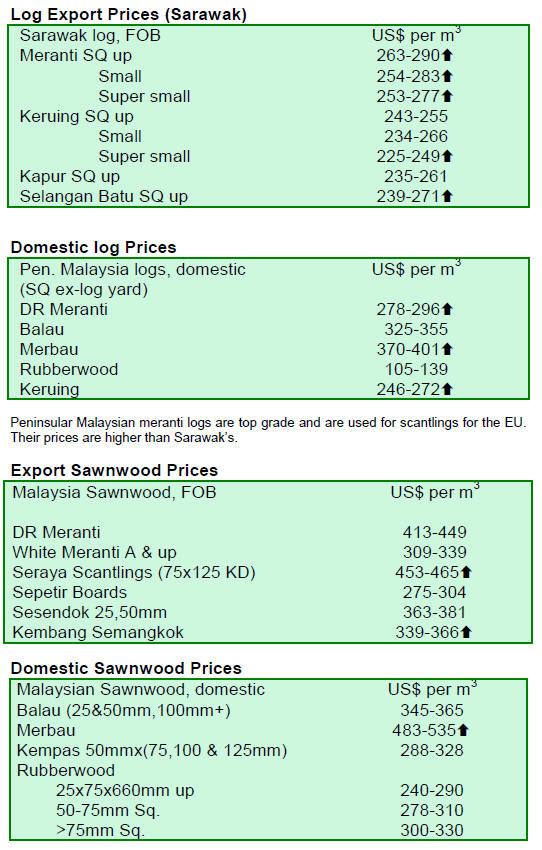
4.
INDONESIA
Indonesian forestry continues to
attract investment
To-date, the Indonesian Ministry of Forestry has issued 12
licenses for commercial forest plantations (HTI) according
to reports. The revenue from these licenses which
amounted to Rp.23.95 trillion will be utilized to develop
around 373,300 ha. of forest plantations.
Data shows that there is still an inflow of investment
into
Indonesian forestry industry despite the signing of the 2
year moratorium on land clearing with Norway.
The Indonesian government is reportedly rehabilitating
developing 35 million ha. of degraded land. Of the total,
some 9 million ha. will become commercial forest
plantations (HTI), 13 million ha. will remain primary
forests, 7.5 million ha. will be allocated for ecosystem
restoration projects, and 5.5 million ha. will be for public
plantation forests (HTR).
Indonesia a safe haven for investment
The Indonesian Minister of Economics stated that
Indonesia stands to gain from the current negative global
outlook. He added that foreign funds are likely to flow to
Indonesia as the country is a low risk country with
minimal exposure to the crises besetting the US and
Europe.
However, he said that Indonesia needed to improve its
infrastructure if it wanted to see an even greater influx of
foreign funds and investments. Traffic congestion and
poor port facilities are a serious handicap to Indonesian
businesses.
Improved infrastructure could improve the export
competitiveness of Indonesian timber and timber products
and other building materials..
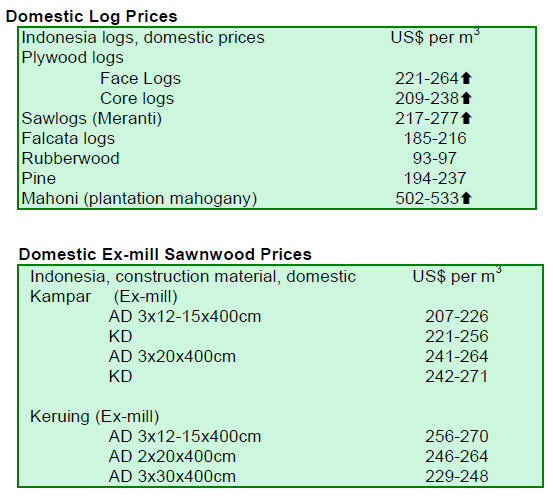
5. MYANMAR
Analysts see market weakness ahead
The market for Pyinkado logs is unchanged but the
demand for Gurjan (Kanyin) is very strong despite recent
price increases. Demand for Teak is stable but not
showing any real signs of improvement.
Analysts say that while the local teakwood industry
reports slightly rising demand for teak flooring blanks and
other sawnwood, the current pessimistic economic outlook
does not seem conducive to improved exports of value
added products.
Plantation forests as a future resource base
The Myanmar media is reporting that the country has over
500,000 hectares of forest plantations and that some of
these were established during theearly days of the national
plan which began in 2001 and will end in 2030.
Estimates by FREDA, a local NGO, suggest that by the
end of the plan period 25% of the nation¡¯s timber needs
could be harvested from the plantations.
FREDA, a very active NGO undertaking development of
the forest resources is very successful in promoting
environmental awareness all over the country.
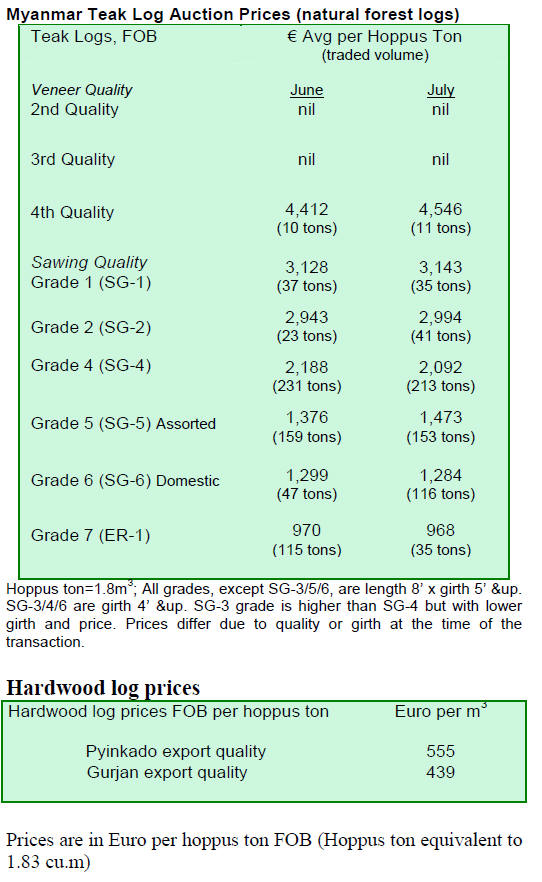
Asian Clearing Union mechanism reduces burden of
international trade transactions
The Myanmar Central Bank has said that traders can
reduce the burden of complicated international
transactions to some countries by using the Asian Clearing
Union (ACU) mechanism.
This emerged during a meeting to explain the ACU
arranged by the Union of Myanmar Federation of
Chambers of Commerce and Industry (UMFCCI) and the
Central Bank.
The Asian Clearing Union (ACU) mechanism is promoted
as a convenient way to settle payments for intra-regional
transactions among the participating central banks.
The main objectives of a clearing union are to
facilitate
payments among member countries for eligible
transactions, thereby economizing on the use of foreign
exchange reserves and transfer costs, as well as promoting
trade among the participating countries.
A spokesperson from the Myanmar Foreign Trade Bank
(MFTB), said that using the ACU allowed traders to settle
accounts in either dollars or euros.
The ACU was established in 1974 and includes
Bangladesh, Bhutan, India, Iran, Myanmar, Nepal,
Pakistan, Sri Lanka and the Maldives. Myanmar¡¯s only
significant trading partners in the union are Bangladesh
and India.
For more see http://www.asianclearingunion.org/
6. INDIA
Brisk log sales at Central India
auctions
Recent auction sales of Teak and other hardwoods at
depots in Central India were well attended. As these were
the last auctions before the depots close until the monsoon
season ends sale prices were up.
Good quality log lots fetched almost 100 Rupees per
cubic
foot more than in previous auctions.
Sawing grade A quality Teak prices at the auctions
averaged Rs.1500, while the average price for B grade was
around Rs.1200. Prices for C grade logs varied from
Rs.800~1000 per cubic foot.
Prices for Haldu ( Adina cordifolia ) ranged between
Rs.500~550 per cubic foot and those for long length
Laurel ( Terminalia tomentosa ) were Rs.550~600 per
cubic foot dropping to Rs.350 per cubic foot for average
sawing quality.
Growing market for wood-plastic composite
products
Domestically manufactured wood-plastic composite
products are appearing on the market in India.
The wood-plastic base material is being used to
produce
mouldings, boards, door and window frames, blocks for
pallets and flooring blocks. Analysts expect this will prove
to be a fast growing market in India as the wood polymer
composite utilises residues from wood working factories
and from agricultural product processors.
Rupee likely to weaken in the short-term
Reports suggest that the rupee is likely to weaken in the
short-term but that in the medium term the rupee could
gain against the US dollar as money begins to flow back
into emerging markets in Asia.
Just after the downgrade of US bonds the rupee fell
to a
low of 45.75 to the dollar.
If the rupee strengthens significantly then
exporters would
be negatively affected but, as analysts point out, at a time
of rising inflation a stronger rupee is the lesser of these
two evils.
India's exports would be affected in the event of a
slowdown in major economies around the world.
In a survey by the Federation of Indian Chambers of
Commerce and Industry immediately after the US
economic downgrade Indian industrialists were of the
opinion that it is unlikely that the current rate of export
growth will continue.
Statistical blip
India statisticians have been thrown a challenge to answer
questions on India's export statistics as it seems there are
large discrepancies between the value of exports reported
by India and the value of imports reported by some major
trading partners.
This apparently came to light in the data released
by the
IMF which shows, in some cases, India¡¯s export values in
FOB terms exceed that of the importing country which
reports the CIF value of trade.
For more on this see:
http://economictimes.indiatimes.com/news/economy/forei
gn-trade/foreign-investors-doubt-indias-exportnumbers/
articleshow/9522434.cms
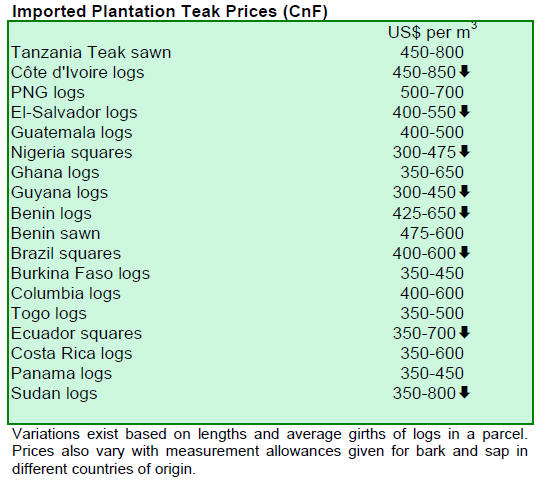
Demand from Europe, USA and Middle East for teak and
other hardwoods remains steady.
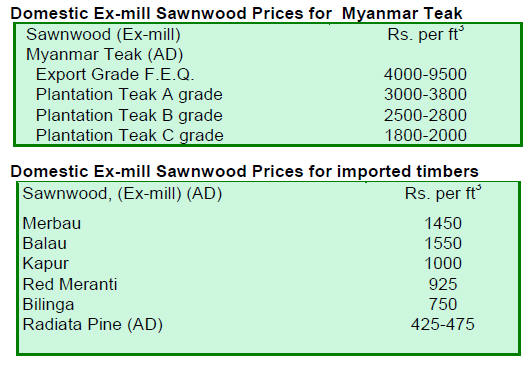
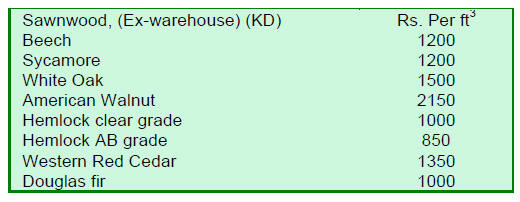
7. BRAZIL
Booming furniture sector in
northeastern Brazil
In the state of Para¨ªba in northeastern Brazil, furniture
manufacturers are taking advantage of the current
domestic construction boom to expand production to meet
the growing demand for furniture.
Analysts say that the local furniture industry is
booming
and that manufacturers of all types of household furniture
are benefiting from increased sales. By way of example, a
company in the municipality of Bayeux has achieved
market growth of 30% to 40% every year for the past three
years.
The local housing market has grown almost 200% over
the
last three years which has boosted the furniture sector. The
state has around 500 furniture manufacturers, employing
some 7,000 workers.
Support to Bayeux furniture SMEs
Companies in the municipality of Bayeux have assistance
from the Brazilian Service for the Support to Micro and
Small Enterprises (SEBRAE).
This organization provides training, consulting and
marketing advice. In order to rationalise raw material
availability SEBRAE created a central business district
where raw materials are marketed to the furniture sector.
SEBRAE also helps the SMEs to visit furniture fairs in
other states such as Ceara, Sao Paulo and Rio Grande do
Sul so as to create new business opportunities.
Furniture park to improve sector competitiveness
In other news, the government of Paraiba has plans to
create an industrial park for furniture manufacturers which
they anticipate will improve revenues in the sector. The
state¡¯s goal is to make companies in the sector more
competitive so that they can reach out to new markets and
achieve brand recognition.
Demand for sustainable wood products leads to
advances in forest management
The Brazilian domestic market consumes about 80% of
the wood produced in the Amazon and consumers of the
wood products manufactured from timber from the
Amazon are now concerned that the wood in these
products is from legal sources.
This awareness by Brazilian consumers, along with
the
demands for proof of legality in the international markets,
is driving demand for legally harvested timber and is
influencing the management regimes adopted by
companies with concessions in the Amazon.
The impact of the market as well as the influence
of the
forest concession policy developed by the federal
government is changing the way forests are managed in
Brazil.
It has been estimated that currently there are
concession
bids pending for more than 1 million hectares of forest.
Reports indicated that the state of Par¨¢ will shortly
conclude concession procedures for an area of 150,000
hectares and two other states, Acre and Amap¨¢, are in the
process of concluding concession over a large area.
Mato Grosso main producer of Amazon timber
The municipalities of Alta Floresta, Sinop and Sorriso in
the northern part of the state of Mato Grosso are the main
producers of timber from the Amazon.
Exports from Alta Floresta in June 2011 totaled US$
2.7
million, a 52% increase over the level in June in 2010.
According to the Ministry of Development, Industry and
Foreign Trade, in the first quarter of 2011, export sales
were just over US$ 17 million, 122% up over the first
quarter in 2010.
Tropical timber is the main export product and
first quarter
exports amounted to US$ 8.1 million. Meat products are
ranked second with coniferous wood products coming in
third place.
The United States was the main buyer of wood
products
from Alta Floresta (US$ 6.3 mil.) followed by Hong Kong
(US$ 3.7 mil.) Egypt (US$ 2 mil.) and Iraq (US$ 1.2 mil.).
The remaining exports went to 17 other countries.
Congo adopts Brazilian technology for monitoring forests
The Democratic Republic of Congo (DRC) has adopted
the technology developed by the Brazilian National
Institute for Space Research (INPE), for a satellite-based
forest monitoring system. The goal of the government of
the DRC is to use the results monitoring to design and
implement national forest policies.
DRC has the second largest tropical forest resource
in the
world, after Brazil. The operation and utilization of the
Brazilian satellite monitoring system has been promoted in
several countries but the DRC is the first country to adopt
the Brazilian technology.
INPE is training technicians from various parts of
the
world and training courses are planned for representatives
from the Congo Basin countries, Latin America and Asia.
The system for monitoring the forests in the DRC
should
be launched at the United Nations Climate Change
Conference in South Africa at the end of this year.
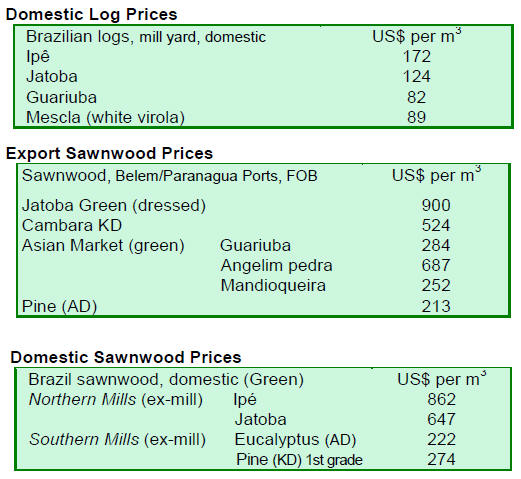
8. PERU
Wooden furniture import business is
booming
During the first five months of 2011 imports of wooden
furniture into Peru rose 55% to US$ 23 million thanks to
the rapid expansion of the real estate sector and the greater
willingness of households to purchase household furniture.
Growth was recorded in imports and domestic sales
of
wooden furniture used in the kitchen (+130% growth),
used in offices (67%) and used in the bedroom (46 %).
The main importer in Peru was Saga Falabella
(approx.
25% of the total value of imports), followed by Sodimac
(18.5%) and Ripley (7%). Analysts expect that in 2011
and subsequent years the wood furniture import business
will deliver double-digit growth.
This, it is said, will be underpinned by demand for
household and office furniture for new apartments and
offices, a sector of the economy which still has much room
for growth.
In 2010 imports of wood furniture were US$ 52.3
million,
71% up on levels in 2009. The main origin of imports was
Brazil (37%), followed by China (18%) and Colombia
(10.0%).
First payment given for community forest
conservation
For the first time in the history of Peru the government has
provided direct financial support to indigenous
communities to conserve their forests.
The funds were provided to five native communities
in the
valley of the Apurimac and Ene rivers as part of the
Program for National Forest Conservation.
To participate in the programme communities were
required to delimit the extent of the forest preserve and
present an investment plan. The goal for this years¡¯
programme is to reach 300,000 hectares of preserved
primary forest.
January to May export performance mixed
The Export Association of Peru (ADEX) has reported the
latest wood product trade data showing that from January
to May 2011 exports were valued at US$59.3 mil. FOB an
8% decline on the same period in 2010.
The three main wood exports markets were China,
Mexico
and United States accounting for 83% of the wood sector
exports.
There were reduced shipments recorded to China (
down
37%) and the Dominican Republic ( down 18%) while for
Mexico and the United States shipments rose 21% and
12% respectively over the same period in 2010.
Exports of semi-manufactured products from January
to
May 2011 accounted for 40% of the total value of exports
for the month and the accumulated value of exports of
these products was US$23.8 mil.
The main market for semi-manufactured products was
the
Chinese market which accounted for 64% of the trade.
The value exports of sawnwood from January to May
2011 were US$ FOB 18.5 million while for the same
period in 2010 the trade was worth US$23.1 mil. FOB.
The main market for sawnwood from Peru is Mexico
which accounted for 38% of the total sawnwood trade.
Exports of veneer and Plywood in the period January
to
May 2011 totaled US$7.9 mil. FOB while for the same
period in 2010 they were US$6.5 mil. FOB, an increase of
21%.
Mexico is the main market for veneer and plywood
from
Peru absorbing 80% of exports of these products. In recent
months the United States market has shown more interest
in veneer and plywood from Peru.
The export of furniture and parts is small and
export
earnings were only US$3.1 mil. FOB in the first 5 months
of the year but the level of trade has increased by 28%
compared to the same period in 2010.

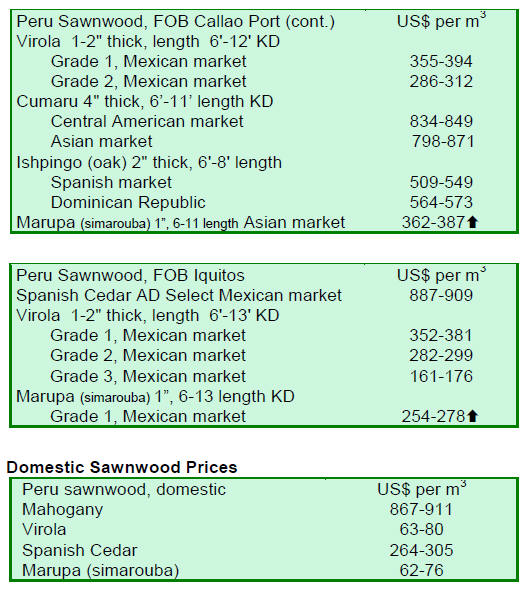
9.
GUYANA
Log export prices holding
steady
During the period under review Greenheart logs were
exported and prices for Fair and Small sawmill qualities
were good. There were no exports of Standard sawmill
quality Greenheart logs.
Purpleheart log prices remain largely unchanged
from the
earlier period while Mora log prices rose for all sawmill
quality logs.
Undressed sawnwood prices weaken as demand stalls
Prices for sawnwood were mixed depending on the species
sold. For Undressed Greenheart (select, sound and
merchantable sawmill grade) prices dropped.
Prices for Undressed Greenheart (Select) fell at
the top end
of the range from US$1,018 to US$818 per cubic metre
but, despite this decline, price levels are still considered as
favourable.
Undressed Greenheart (Sound) prices fell at the top
of the
range from US$954 to US$550 per cubic metre. A similar
drop was recorded for Undressed Greenheart
(Merchantable) where the maximum price level fell from
US$806 to US$742 per cubic metre.
On the other hand, prices for Undressed Purpleheart
improved, increasing for two sawnwood categories.
Undressed Purpleheart (select) sawnwood was sold in the
range of US$650 to US$925 per cubic metre. Similarly
Undressed Purpleheart (sound) sawnwood also recorded a
price increase from US$600 to US$742 per cubic metre.
For the period under review there was no export of
Mora
sawnwood.
Dressed Greenheart sawnwood prices increase
Dressed Greenheart prices were very favourable,
increasing from US$890 to US$1,018 per cubic metre. On
the other hand Dressed Purpleheart sawnwood, while still
at the top of its price range, did experience some price
weakness dropping from US$1,060 to US$933 per cubic
metre.
Plywood, piles and post prices firm
For this fortnight period prices for BB/CC quality
plywood improved on the export market fetching a price
of US$ 600 per cubic metre.
Guyana¡¯s Roundwood exports (Greenheart Piles and
Wallaba Post) were in demand in export markets and
prices in the markets such as the Caribbean, Europe and
North America were good.
Guyana¡¯s Ipe (Washiba) continues to be in high
demand in
overseas market and is attracting prices of US$ 2,500 per
cubic metre.
Local company unveils prefab homes in Guyana
A local timber and roof shingle-maker has announced
plans to introduce pre-fabricated homes to the Guyanese
market with a complete structure erected in as little as 18
days.
Bulkan Timber Works Inc, which runs its main
operations
from its factory at Yarrowkabra, Soesdyke/Linden
Highway, has achieved significant production at its site
catering almost exclusively to the Caribbean market.
From decking, mouldings, wooden windows to doors,
and
shingles, the company is ready to now unveil prefabricated
homes as its latest product.
While management has indicated that the cost may be
a
little high for a low income family the advantage is the
speed at which the home can be constructed.
In the short term the company is targeting the
middle
income families but will look into the possibilities of
producing even cheaper prefabricated homes.
A 700-square foot home which is displayed at the
company¡¯s local office would cost as little as $7M Guyana
dollars.
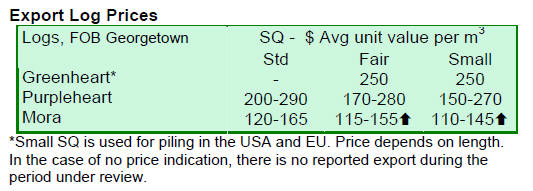
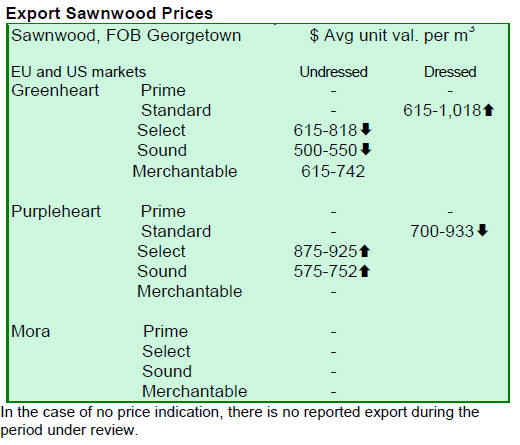
Related News:
¡¡